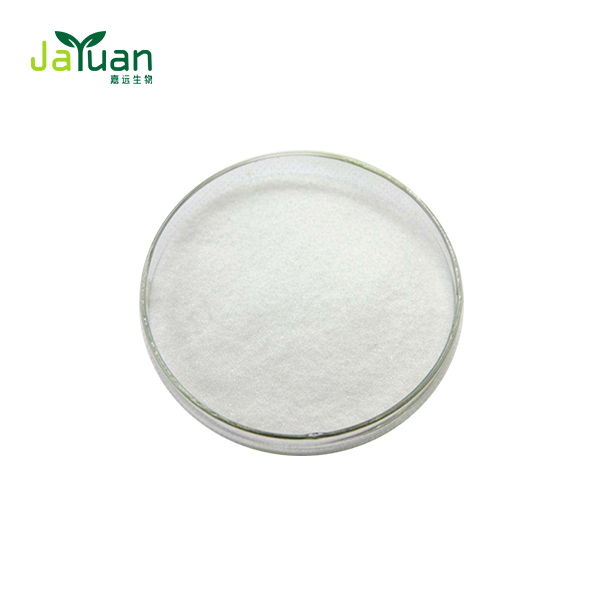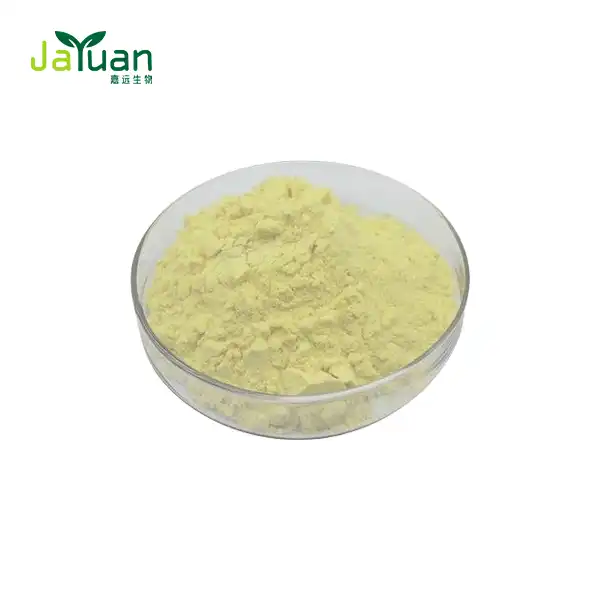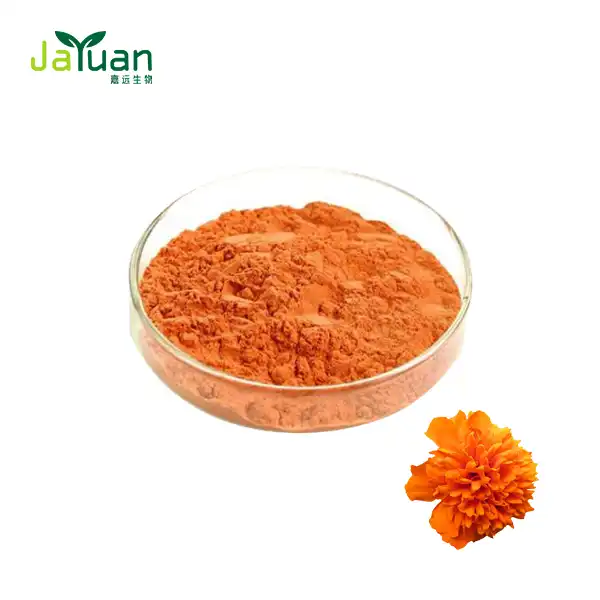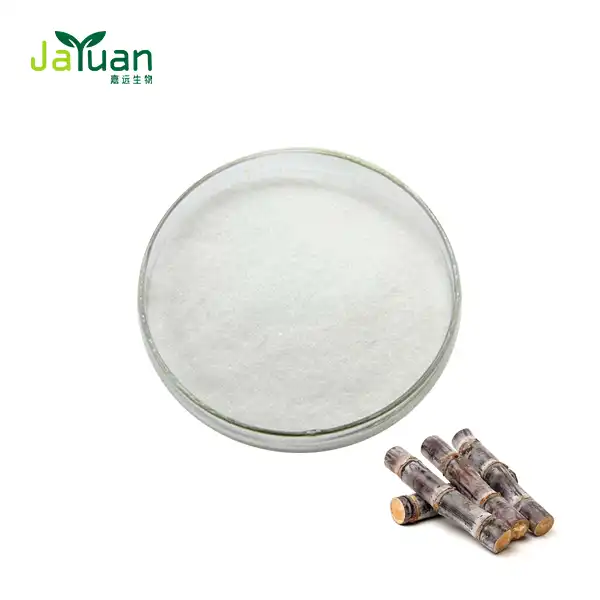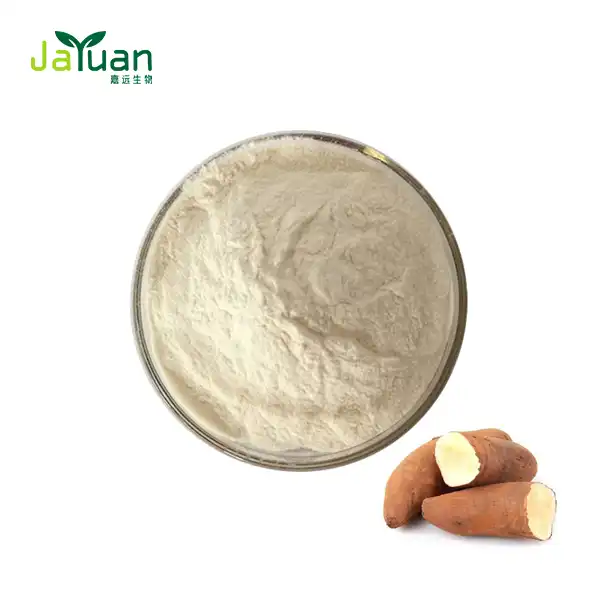How do tea polyphenols work?
Introduction
Due to their potential health benefits, natural tea polyphenols, a diverse group of natural compounds found in tea leaves, have received a lot of attention. These advantages range from their cell reinforcement capacities to their potential commitments to metabolic wellbeing and sickness avoidance. In this article, we dig into the inquiry: How do polyphenols in tea work?

What Components Do Tea Polyphenols Use to Go about as Cell reinforcements?
Getting rid of Free Radicals
The products, especially catechins and flavonoids, go about as cancer prevention agents essentially by killing free revolutionaries. Free extremists are shaky particles that can make oxidative harm cells, proteins, and DNA. The products give electrons to these free revolutionaries, balancing out them and keeping them from causing cell harm. This cycle successfully diminishes oxidative pressure, which is connected to different persistent infections and maturing processes. The products protect the body's tissues and maintain overall health by reducing the effects of free radicals.
Upgrading Endogenous Cancer prevention agent Protection
Natural tea polyphenols additionally support the body's own cancer prevention agent guard frameworks. Endogenous antioxidants like catalase, superoxide dismutase (SOD), and glutathione may see an increase in activity as a result. These antioxidants prevent oxidative damage and neutralize excessive free radicals. For instance, the polyphenols in tea encourage the production of glutathione, a potent antioxidant that aids in the elimination of toxins and guards cells against oxidative stress. By upgrading these normal guard components, the products add to a more hearty cell reinforcement safeguard network inside the body.
Recovering Different Cancer prevention agents
One more component by which the products go about as cancer prevention agents is by recovering other cell reinforcement atoms. For example, the products can reestablish the movement of nutrients C and E, which are fundamental cell reinforcements that kill free revolutionaries. After these nutrients have killed free revolutionaries, they can become oxidized and less successful. The products aid in the regeneration of these vitamins, ensuring that they are available and active to safeguard cells against oxidative damage. The body's overall antioxidant capacity is increased during this regeneration process, providing comprehensive protection against oxidative stress.
The products play a crucial role in combating oxidative stress and supporting overall health by employing these mechanisms, which include regenerating other antioxidants, enhancing endogenous defenses, and neutralizing free radicals.

How Do Tea Polyphenols Influence Cell Wellbeing?
Upgrading Cell Cancer prevention agent Guards
The products, particularly catechins like EGCG (epigallocatechin gallate), assume a critical part in improving cell reinforcement protections. By neutralizing free radicals and reducing the damage caused by reactive oxygen species (ROS), they aid in the prevention of oxidative stress in cells. By rummaging these destructive atoms, the products forestall cell harm that can prompt different sicknesses and maturing. They likewise invigorate the creation of key endogenous cancer prevention agents, for example, glutathione and superoxide dismutase, which further support the cell's capacity to battle oxidative pressure and keep up with cell wellbeing.
Tweaking Fiery Reactions
Tea polyphenols are known to impact cell aggravation, which is critical for keeping up with generally wellbeing. Chronic inflammation has the potential to harm cells and contribute to a variety of illnesses, including cancer and cardiovascular disease. The products assist with tweaking incendiary reactions by restraining the action of favorable to fiery cytokines and chemicals, like COX-2 and TNF-alpha. By lessening the creation of these provocative go betweens, the products assist with relieving irritation at the cell level, in this manner safeguarding cells from fiery harm and advancing a better cell climate.
Supporting Cell Fix and Recovery
The products likewise support cell fix and recovery processes. They help in fixing harmed DNA and upgrading cell fix systems. This is critical for keeping up with cell honesty and forestalling changes that can prompt malignant growth and different sicknesses. Also, the products can enact cell flagging pathways that advance cell endurance and recovery, guaranteeing that harmed or maturing cells are actually supplanted with solid ones. The products support these repair processes and aid in cellular function and longevity.
In synopsis, the products emphatically influence cell wellbeing by improving cancer prevention agent safeguards, balancing aggravation, and supporting fix and recovery. These impacts add to in general cell essentialness and can assist with forestalling different illnesses connected to oxidative pressure and irritation.
How do the polyphenols in tea affect inflammation?
Pro-inflammatory enzyme inhibition
Tea polyphenols, especially catechins like EGCG (epigallocatechin gallate), have been displayed to repress supportive of incendiary proteins, like cyclooxygenase-2 (COX-2) and lipoxygenase (LOX). These catalysts are central participants in the fiery cycle, adding to the creation of provocative arbiters like prostaglandins and leukotrienes. The products reduce the synthesis of these inflammatory compounds by suppressing the activity of these enzymes, thereby reducing the overall inflammatory response. This hindrance helps in overseeing conditions connected with ongoing irritation, like joint pain and cardiovascular sicknesses.
Tweaking Incendiary Cytokine Creation
The products likewise impact irritation by adjusting the creation of fiery cytokines. These cytokines, including growth rot factor-alpha (TNF-alpha) and interleukin-6 (IL-6), assume basic parts in the fiery reaction and can fuel ongoing irritation whenever created in overabundance. The products assist with managing the levels of these cytokines by influencing flagging pathways like atomic element kappa B (NF-kB), which controls the statement of different incendiary qualities. By directing cytokine creation, the products add to a reasonable provocative reaction and diminish the gamble of irritation driven sicknesses.
Upgrading Cell reinforcement Protection Systems
The products enhance the body's antioxidant defenses, which indirectly influences inflammation in addition to directly affecting inflammatory pathways. Oxidative pressure is firmly connected to aggravation, as receptive oxygen species (ROS) can initiate fiery pathways. The products support the degrees of endogenous cell reinforcements like glutathione and superoxide dismutase, which assist with killing ROS and decrease oxidative pressure. This decrease in oxidative pressure diminishes the actuation of provocative pathways, subsequently assisting with controlling and lower irritation levels all through the body.
In general, the products reduce inflammation by enhancing antioxidant defenses, inhibiting pro-inflammatory enzymes, and modifying cytokine production. These activities add to their job in lessening aggravation and supporting generally speaking wellbeing.
Conclusion
In conclusion, a fascinating area of nutrition and health research is natural tea polyphenols. Their therapeutic potential is supported by their diverse biological activities, which include potential roles in metabolism and disease prevention, antioxidant and anti-inflammatory effects, and more. While research keeps on explaining the exact systems and ideal portions for medical advantages, integrating the products into dietary propensities might offer an available and agreeable procedure for advancing by and large prosperity.
In the event that you are keen on our items, you can reach us by email at sales@jayuanbio.com.
References
1. Smith, N., & Wilson, M. A. (2019). Tea Polyphenols and Their Potential Benefits in Chronic Disease Prevention. American Journal of Lifestyle Medicine, 13(6), 615-618.
2. Rasheed, Z., & Akhtar, N. (2017). An Update on Polyphenol Research: A Gateway to Cardiovascular Health. Current Pharmaceutical Design, 23(7), 1029-1049.
3. Yang, C. S., Zhang, J., Zhang, L., Huang, J., & Wang, Y. (2016). Mechanisms of Body Weight Reduction and Metabolic Syndrome Alleviation by Tea. Molecular Nutrition & Food Research, 60(1), 160-174.
4. Sang, S., & Lee, M. J. (2008). Tea as a Potential Chemopreventive Agent in Lung Cancer. International Journal of Oncology, 33(6), 1161-1171.
5. Hursel, R., Viechtbauer, W., & Westerterp-Plantenga, M. S. (2009). The Effects of Green Tea on Weight Loss and Weight Maintenance: A Meta-Analysis. International Journal of Obesity, 33(9), 956-961.
6. Yang, T. T., & Koo, M. W. L. (2014). Hypocholesterolemic Effects of Chinese Tea. Pharmacological Research, 65(5), 675-681.


